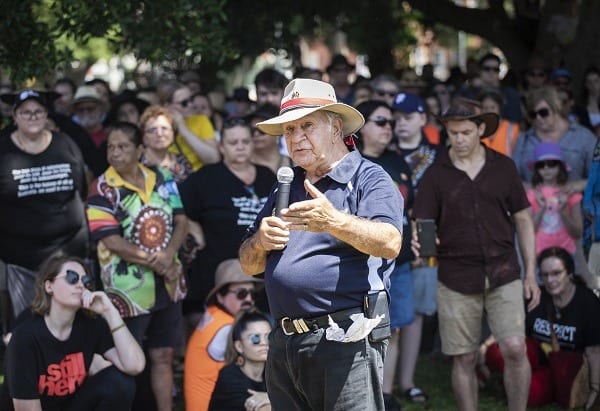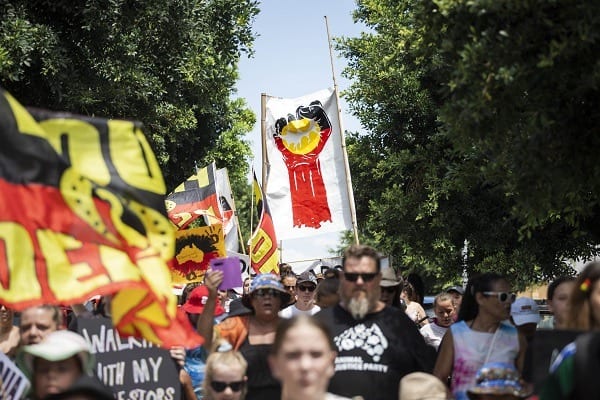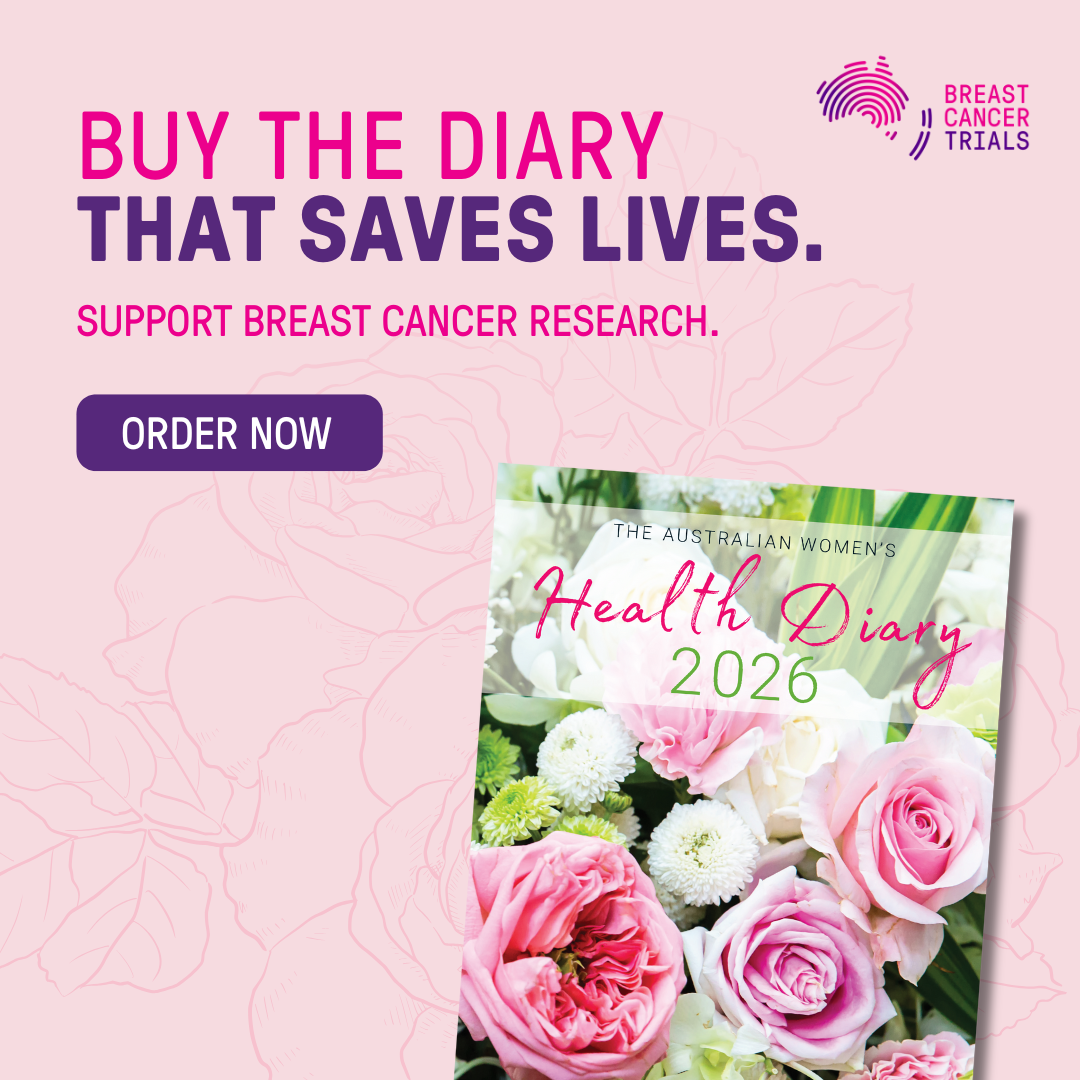This is where I was born, and this is where I now call home. We have beautiful walks, lakes, ocean cliffs, beaches, and this year we had our own Invasion Day Rally on January 26th.
My parents were here visiting family when I happened to be born, it wasn’t intentional but I came earth-side in the same hospital that my Grandmother had birthed my Father.
And I was in that same hospital having surgery on my birthday this year when I began to give serious thought to the fact that large numbers of people from this region travel hours each way to partake in Invasion Day/Survival Day/Day of Mourning rallies each year.
I was worried that recovering from surgery would make travelling the 6-hour round trip to the Sydney rally with my family unfeasible. That got me thinking about how unfeasible it would already be for many, and yet, so many of us do make the trip every year and the numbers are growing.
Several days and many yarns (still-sedated on pain killer) later, the momentum of that idea began to grow. Along with my two co-organisers Lynda-June Coe and Tim Buchanan, we worked through protocol, legalities and logistics, made phone calls, sent formal letters to key community stakeholders, held and attended numerous meetings, filed paperwork, and liaised with the local area command about having the roads closed for the march.
We listened to community members, took responsibility, organised an entirely First Nations speaker line up, and thanks to a fundraiser hosted by ‘Shrimp’ with the support of ally groups for our event, were able to put on a feed for the entire crowd at the close of the event.
These events do not just happen, and contrary to what some negative media around Invasion Day rallies suggest, they are voluntarily organised around our own existing workloads (jobs), family responsibilities and community commitments. It is thanks to the work of teams of willing contributors that these events come together.
Individuals and organisations contacted their own networks, organised industrial sewers and painters to create the massive banners which led the way on the day, photographers who donated time and coverage: these are people who understand allyship.
Anyone with skills to share and a positive attitude was able to contribute, and in the end we brought together a team of co-ordinators who held identified responsibilities overseeing each team; looking after First Aid, Elder Care, Cooking Prep/Serving/Clean Up, Logistics (the chairs and tents don’t appear out of nowhere), and a team of 20 marshals.
There were a lot of high-vis vests on the day, all volunteers. It was a sustainability sensitive event, which meant all food was served onto crockery – no disposables – which meant hauling boxes of cutlery and ceramic plates for set up, and washing and drying dishes as part of the pack down at the end. This is what I witnessed, and more. This is community, in action.

Uncle Bill Smith (Wirrigan), an Aniwan, Wonnorua and Gomeroi man, and Aboriginal Elder welcomed the crowds to the gathering, and was responsible for the smoking ceremony. Reflecting on the event, Uncle Bill commented:
“This day was beautiful, very inspiring, very spiritual and connecting. All my life I have been about bridging cultures and building bridges, and bringing people together through our heritage and culture for the next generation, to be able to walk hand in hand as one and coming together as one. I want to commend Amy and the organisers for the day, because this is what it’s all about, building the foundation and footpaths for the future, for our children’s children, immaterial of race, colour, and creed, so we can walk hand in hand as one across this land, have a place to hunt, gather and fish. That is our responsibility, and Amy and her group, are leading the way.”
From the outside, looking in on these rallies, you may take away messaging about First Nations and collective action, or maybe learn more about the history, present, and future of this continent and those who call it home.
But having organised this year, from the inside, I learnt lessons about who was willing to show up for us. You have no idea how much it means to me as a Mum wanting to raise kids safe and strong in their Indigenous identity as Gomeroi to see parents from our children’s school marching alongside us.
Seeing young adults sitting on the ground washing dishes in giant tubs, out of sight from the crowds who were enjoying a feed, I feel the heart that is in that.

People do not always realise that sometimes solidarity means simple acts like listening, sharing flyers online, washing dishes, contributing a skill or talent like singing or sewing, and of course – showing up and marching with us.
Together we can get it done, and for that I am grateful for the invisible work of collective action and solidarity, and the people who showed up, literally.
Organisers wish to thank the following for their contribution to this event:
All of the speakers, including Uncle Bill Smith, Taylah Gray, Dr Ray Kelly, and Uncle Pat (nb: two names have been redacted at the request of their family).
Indigenous Solidarity Network Newcastle, Food Not Bombs Newcastle, Uprising Bakery, Shrimp, Sonny and Scout, Pachamama House Community House, Softy’s Clubhouse, Hunter Community Environment Center, Extinction Rebellion Newcastle, The Wilderness Society, Unity Engine Productions.
Photo credit: Iron Monkey Photo.



